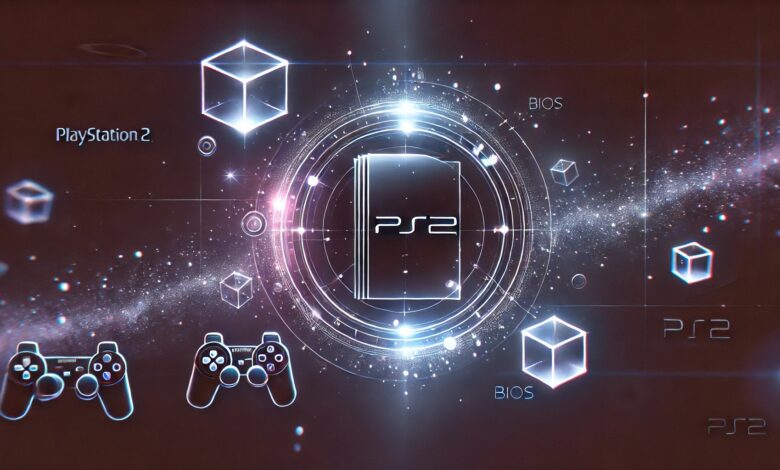Title: Ultimate Guide to PS2 BIOS: Everything You Need to Know for PS2 Emulation

The PlayStation 2 (PS2) is still regarded as one of the most iconic gaming consoles of all time. Despite its age, Ps2 bios many retro gaming enthusiasts still enjoy playing PS2 games, and modern technology allows us to run these games on PCs using emulators. In this comprehensive guide, we will delve into what PS2 BIOS is, why it’s important for emulation, how to extract it, and some legal considerations you should keep in mind. By the end of this article, you’ll have all the information you need to enjoy your PS2 games on your PC legally and effectively.
What is PS2 BIOS?
BIOS stands for Basic Input/Output System, and it’s a crucial component in all computers and gaming consoles. For the PlayStation 2, the BIOS is responsible for booting the console, managing hardware functions, and loading games. Without the BIOS, the system would be unable to initialize its software and hardware.
In terms of PS2 emulation, the BIOS is just as important. It essentially mimics the PS2’s original environment, allowing you to run PlayStation 2 games on your PC using emulators like PCSX2. The BIOS file is required for the emulator to start, load games, and interact with the virtual hardware. Without it, you cannot play PS2 games, regardless of how well you’ve configured the emulator.
Why is PS2 BIOS Necessary for Emulators?
When using an emulator like PCSX2, the BIOS file plays an essential role in replicating the original PS2 system. PCSX2 is a software that simulates the PlayStation 2 environment on your computer, and the BIOS is the first step in this process. Here are a few reasons why the BIOS is crucial for emulation:
- System Initialization: The BIOS is responsible for initializing hardware components such as the CPU, memory, and input/output devices.
- Game Loading: It provides the necessary system files that allow games to run.
- Compatibility: Emulators rely on the BIOS to ensure compatibility with PS2 games and to handle system-level functions correctly.
While PCSX2 and other emulators can replicate the PS2 hardware and software, they can’t do so without the PS2 BIOS.
How to Extract PS2 BIOS from Your Own Console
Before you start playing PS2 games on your computer, you need to extract the BIOS from an actual PS2 console. Here’s a step-by-step guide to do just that:
What You Need:
- A PlayStation 2 console.
- A USB drive or external hard drive.
- A modded PS2 or one with homebrew capabilities (necessary to run custom software).
- A computer to transfer the files.
Steps to Extract PS2 BIOS:
- Install FreeMCBoot:
FreeMCBoot (FMCB) is a homebrew application that allows your PS2 to run custom software. This is required to run BIOS extraction tools. You’ll need to install it on your PS2’s memory card. There are multiple guides available online for this process, and it typically involves using a PS2 memory card and a compatible USB device. - Download BIOS Dumper Tool:
Once you have FreeMCBoot set up, you need a tool to extract the BIOS. PS2 BIOS Dumper is one such tool, available in various online PS2 homebrew communities. This tool can extract the necessary BIOS files from your PS2 console to your USB drive. - Run the Dumper on Your PS2:
Plug the USB drive into your PS2 and run the BIOS Dumper tool through the FreeMCBoot menu. The tool will automatically locate your console’s BIOS and begin the extraction process. - Transfer the BIOS File:
Once the BIOS file is extracted, it will be saved to your USB drive. You can then plug the USB drive into your computer to copy the BIOS file to a location where it can be accessed by your emulator.
Now that you have the BIOS file, it can be used to configure the emulator and start playing PS2 games on your PC.
How to Install PS2 BIOS in PCSX2
Once you have the BIOS file, the next step is installing it in your emulator. Here’s a simple guide on how to do this in PCSX2, one of the most popular PS2 emulators.
Steps for Installation:
- Download and Install PCSX2:
Head to the official PCSX2 website and download the latest version of the emulator. It’s available for Windows, macOS, and Linux. Follow the on-screen instructions for installation. - Locate the BIOS Folder:
After installation, navigate to the PCSX2 installation directory. Inside the folder, you’ll find a folder named “BIOS”. This is where you will place the extracted PS2 BIOS file. - Move the BIOS File:
Copy the extracted BIOS file from your USB drive to the BIOS folder within the PCSX2 directory. - Configure PCSX2 to Use the BIOS:
When you launch PCSX2 for the first time, it will ask you to configure the emulator. In the configuration menu, select the BIOS option and choose the appropriate BIOS file you just copied.
Conclusion
The PS2 BIOS is a vital component for running PlayStation 2 games on an emulator. It acts as a bridge between the PS2 hardware and the software, enabling the games to run correctly on your PC. By extracting the BIOS from your own console and properly configuring it in PCSX2, you can enjoy a seamless retro gaming experience on your computer.
However, it’s important to remember the legal implications of using the BIOS. Always ensure that you’re using a BIOS file extracted from a PS2 console that you own, and only use emulators and game backups that comply with copyright laws.
With the right setup and knowledge, emulating ps2 bios games can unlock a treasure trove of classic gaming experiences. So go ahead, extract your PS2 BIOS, configure your emulator, and start reliving the golden age of gaming.




